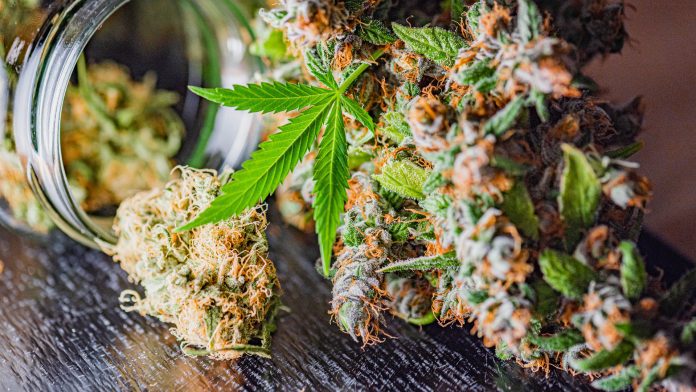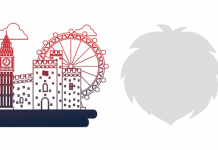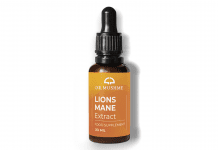
Amongst people with an aneurysmal subarachnoid haemorrhage (aSAH) stroke, a type of bleeding stroke, recent cannabis users were more than twice as likely to develop a dangerous complication, possibly resulting in death or greater disability.
The study is the largest to examine the impact of THC or Tetrahydrocannabinol, the psychoactive component of cannabis, on complications after an aneurysmal subarachnoid haemorrhage, a bleeding stroke.
The new research has been published in Stroke, a peer-reviewed journal of the American Stroke Association, a division of the American Heart Association.
40% of bleeding stroke diagnosis leads to death
In an aneurysmal subarachnoid haemorrhage, a weakened and bulging part of a blood vessel bursts on the surface of the brain, resulting in bleeding in the space between the brain and the tissue that covers it. This type of bleeding stroke can result in neurological disability in around 66% of people and death (during the follow-up period) in about 40%.
The immediate treatment focuses on stopping and preventing further bleeding. However, despite treatment, in about 14 days following the stroke, many patients may develop worsening symptoms, such as speech problems or difficulty moving. This is caused by blood from the initial stroke irritating blood vessels, causing them to constrict enough to cut off the bloody supply to a portion of the brain (known as vasospasm), resulting in additional brain damage. This complication, known as delayed cerebral ischemia, is a leading cause of death and disability after an aSAH stroke.
“We’re all vulnerable to a bleeding stroke or a ruptured aneurysm; however, if you’re a routine marijuana user, you may be predisposed to a worse outcome from a stroke after the rupture of that aneurysm,” said Michael T. Lawton, M.D., senior author of the study and president and CEO of Barrow Neurological Institute in Phoenix, Arizona.
The study analysed data on more than 1,000 patients
Researchers analysed data on more than 1,000 patients who had been treated for aSAH stroke at Barrow Neurological Institute between January 1, 2007, to July 31, 2019. All patients had been treated to stop the bleeding either via open surgery to clip off the base of the aneurysm or noninvasively by threading a slim tube through a blood vessel to the base of the aneurysm and releasing coils that fold to fill in the space and provide a barrier to further bleeding.
Urine toxicology screening was performed on all patients admitted with ruptured aneurysms. The study compared the occurrence of delayed cerebral ischemia in 46 people (average age of 47 years; 41% female) who tested positive for THC (the component of cannabis that induces a high) and 968 people (average age 56 years, 71% female) who tested negative for THC. A positive urine screen for THC reflects cannabis exposure within three days for single-use to within approximately 30 days for frequent heavy use.
The recent cannabis users did not have significantly larger aneurysms or worse stroke symptoms when admitted to the hospital, and they were not more likely to have high blood pressure or other cardiovascular risk factors than patients who screened negative for THC. However, recent cannabis users were significantly more likely to have also tested positive for other substances, including cocaine, methamphetamines and tobacco, compared to the patients who screened negative for THC.
Amongst all participants, 36% developed delayed cerebral ischemia, 50% were left with moderate to severe disability, and 13.5% died.
Patients were 2.2 times more like to die
After adjusting for several patient characteristics as well as recent exposure to other illicit substances, patients who tested positive for THC at the last follow up were found to be:
- 7 times more likely to develop delayed cerebral ischemia;
- 8 times more likely to have long-term moderate to severe physical disability; and
- 2 times more likely to die.
“When people come in with ruptured aneurysms, and they have a history of cannabis use or are positive on a toxicology screen, it should raise a red flag to the treating team that they are at higher risk of vasospasm and ischemic complication,” Lawton said. “Of all the substances detected in the toxicology screen, only cannabis raised the risk of delayed cerebral ischemia. Cocaine and meth are hypertensive drugs, so they are likely related to the actual rupture but not expected to have an impact on vasospasm.”
The study did not specifically address how cannabis raises the risk of vasospasm and delayed cerebral ischemia. Lawton noted, “Cannabis may impair oxygen metabolisation and energy production within cells. When stressed by a ruptured aneurysm, the cells are much more vulnerable to changes that affect the delivery of oxygen and the flow of blood to the brain.”
The study’s limitations included being conducted retrospectively at a single institution and not being a head-to-head analysis of people who use marijuana and those who don’t.
The researchers are currently conducting follow-up in the laboratory to better understand THC-related risks that may impact aneurysm formation and rupture. They also urge further research to study the impact of various doses of THC on bleeding stroke complications.
“Evaluating the risks and benefits of marijuana use is more important given its popularity and as more states make recreational marijuana use legal,” Lawton said.



















